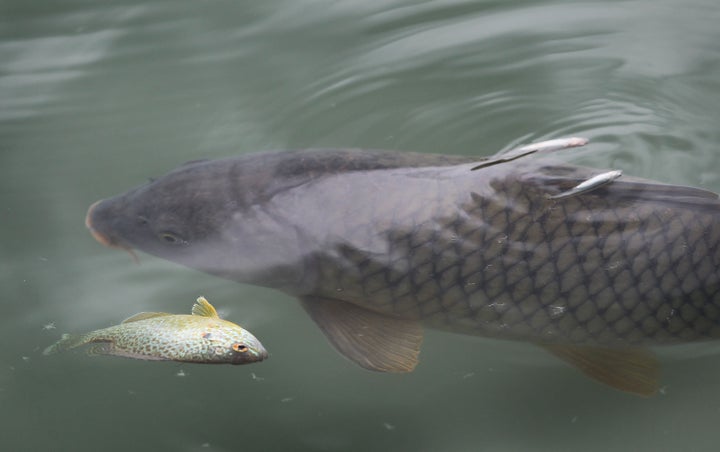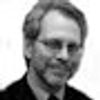
![]() This week sees the release of a very important book by visionary architect Jeanne Gang, Reverse Effect: Renewing Chicago’s Waterways. The book sprouts from the collaboration between Jeanne Gang, her excellent colleagues at Studio Gang, very smart students at Harvard's Graduate School of Design, and NRDC's Chicago office.
This week sees the release of a very important book by visionary architect Jeanne Gang, Reverse Effect: Renewing Chicago’s Waterways. The book sprouts from the collaboration between Jeanne Gang, her excellent colleagues at Studio Gang, very smart students at Harvard's Graduate School of Design, and NRDC's Chicago office.
Several years ago when NRDC began the hard work needed to find solutions to the many problems that the Chicago River brings to the Great Lakes and the people of Chicago, I knew that we needed to fundamentally re-imagine the role of the waterway within the City and the Great Lakes ecosystems. And we would have to rethink the fatal actions of 100 years ago, when the Chicago River was reversed so that it would send sewage and water-borne diseases away from the Lakes and into the Mississippi River. Reverse Effect significantly moves that “rethinking” to a new level of sophistication.
This is a book about solutions. Solutions to the flooding and contaminated sewage that continues to flow into the Chicago River. Solutions to the looming threat of invasive species, particularly the insidious Asian carp attempting to use the Chicago River to access the Great Lakes. Solutions to quality of life problems that persist in many of our city’s neighborhoods, and are desperately in need of new amenities.
This stands as Jeanne’s first major public project since the MacArthur Foundation awarded her its “Genius” grant earlier in the year, and the book shows how appropriate the award is. It outlines a powerful vision for what the river can do for Chicago -- and how re-thinking the role of rivers in the urban environment can give birth to a new, life-expanding approach to our Nation’s waterways. The ideas are big. They are also practical. And they are grounded in what Americans have historically done to seize the future, improve our quality of life and expand opportunities for our society. The book reflects a deeply American approach to challenges: meeting them with enthusiasm, imagination and a pleasure in solving problems with the sort of “can do” intelligence necessary to battle the nested blights plaguing the troubled waterways: polluted water, flooded basements, closed beaches, and invasive species threatening the future of our fresh water.
In 2010, NRDC released a report focused on the twin goals of blocking invasive species and the need to clean up the Chicago River. Entitled “Re-Envisioning the Chicago River,” the report proposed physical barriers to restore the natural separation of the Great Lakes and Mississippi River watersheds to repel the movement of Asian carp into the Great Lakes, while also dealing with the region’s crumbling water infrastructure and the flooding problems created by its combined sewer overflows with a heavy emphasis on “green infrastructure” (the use of things like open space, green roofs, and permeable pavement to collect, hold and filter rainwater rather than dumping it into already over-taxed sewers and mixing it with sewage and other contaminants).
The report was Jeanne’s jumping off point for this book project. We were focused on immediate actions to address the invasive threat and flooding problems, in ways consistent with future reform of the failing existing infrastructure. But when Jeanne became engaged with the project, she began pressing forcefully on what those “future solutions” needed to be. She brought to the task a rich understanding and experience in combining environmental, engineering and design systems to drive improvement of urban environment.
She chose to focus the work of the studio course she taught at the Harvard University Graduate School of Design in spring 2011, on the “redesign of the Chicago River.” The very able students in the class, drawn from all over the world, looked at how to take the next steps to redesign the River, and thought big. The exciting urban potential of the students’ work is at the core of the book, which delves deep into the history, current conditions and inspirational potential future. The result is bracing, exciting, bold -- and it is fun.
In the concluding essay, Jeanne notes:
This thought experiment takes the form of a series of steps. The moves it describes are like a possible game of chess, in which everyone wins if Chicago makes the right choices. I present it here not as a formal, shovel-ready plan, but in the hopes that its ideas will spark energy and enthusiasm among architects, designers, experts, policy makers, community members and all of the other people who will be needed if we are to successfully renew our waterways.
And that is exactly right. There is big thinking in this book, from Jeanne, her colleagues at Studio Gang, the Harvard students and from my colleagues in NRDC’s Chicago office. Not all of it is “shovel-ready” -- that makes it no less practical, functional or reasonable. Any of us who have paid attention to the role of innovation, invention and creative enterprise in American history knows that envisioning a new future is intensely practical -- in fact, it is the beginning of the deed itself.
No single solution can be immediately deployed that will address the many ills of the Chicago River -- or those in most of our urban waterways. What is required is steady, thoughtful and determined work. Jeanne has pushed that effort forward with Reverse Effect.
"Reverse Effect" in production image courtesy of Studio Gang.
This post originally appeared on NRDC's Switchboard blog.
